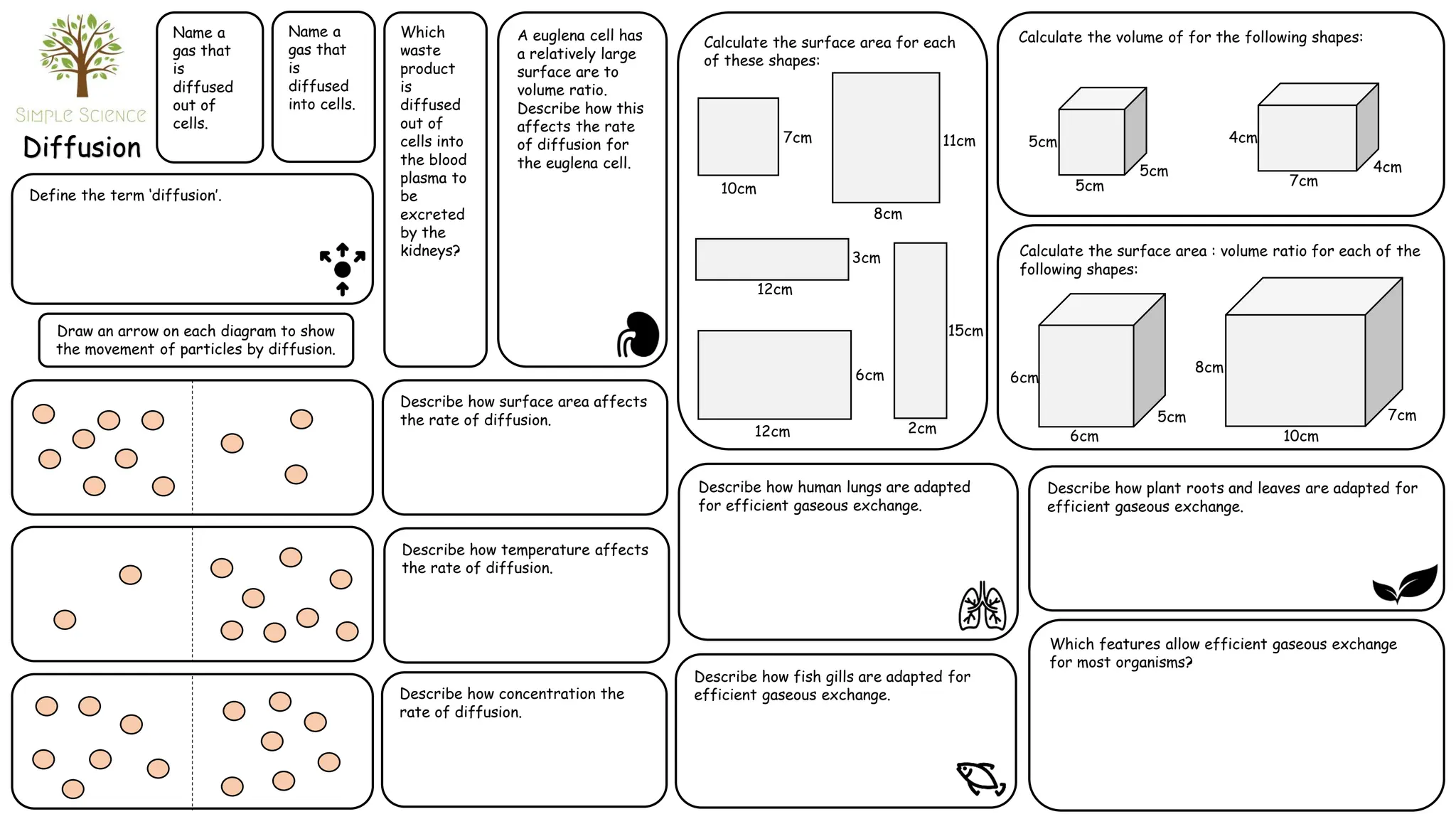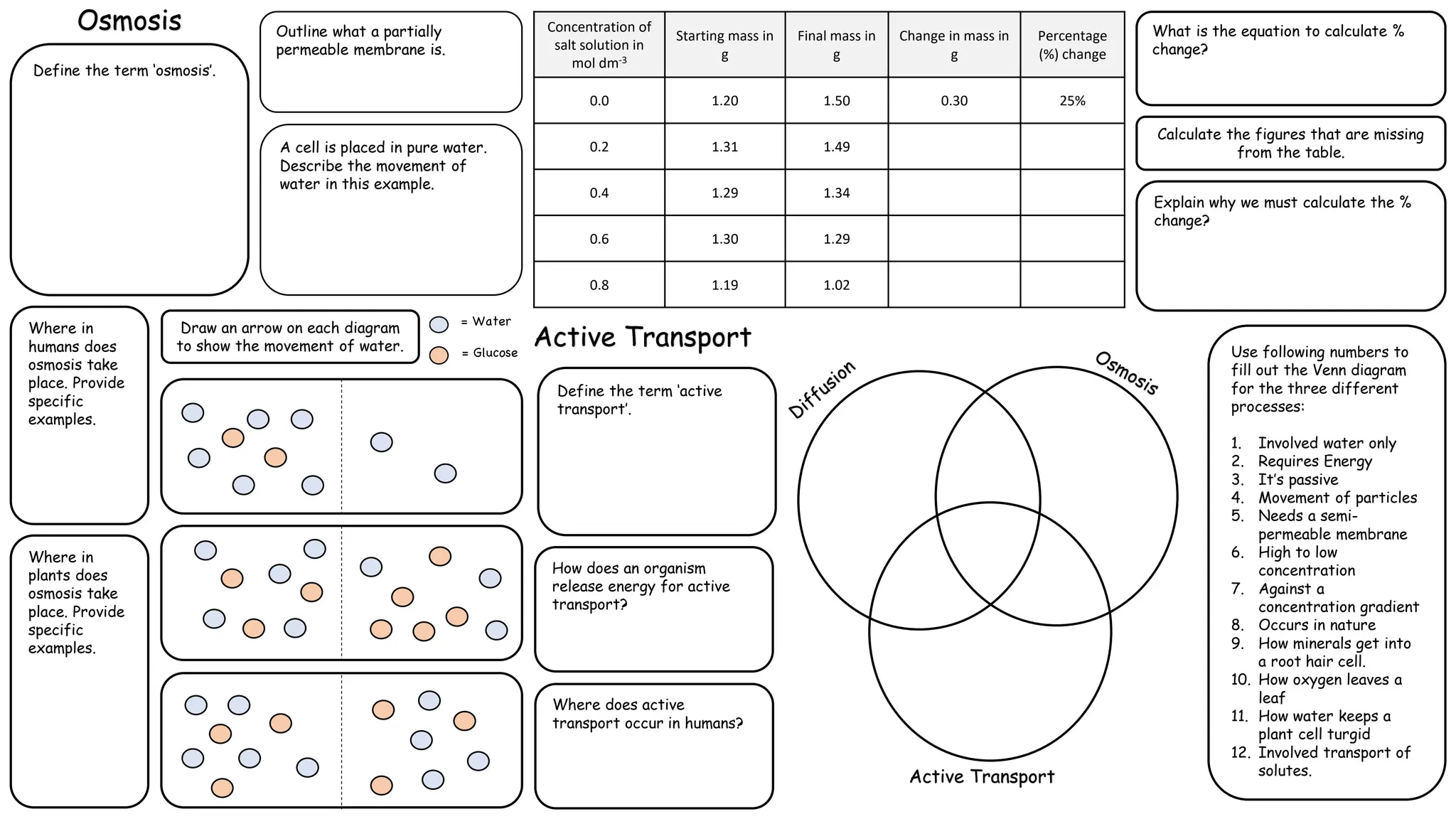This document contains questions and diagrams about diffusion, osmosis, and active transport. It asks the learner to define key terms, identify examples of these processes in organisms, describe how environmental factors affect rates of diffusion, calculate surface area to volume ratios, and complete a Venn diagram comparing the three transport processes. The questions cover topics like membrane permeability, concentration gradients, energy use, and adaptations in lungs, gills, and plant roots/leaves that allow for efficient gas exchange.


